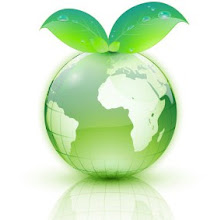
Girls and women, do you have some memories of imitating your mother applying makeup? Or would you sit in front of the mirror and smear your mother's ruby-red lipstick on your lips, and pucker up like the movie and television stars you'd seen? I also recall the days when I was about 16 and my friends --not having arrived at the age where we were allowed to wear lipstick--would sneak a tube of lipstick to school, put it on, and then wipe it off before they got home. This was my innocent memory about lipstick.
Lipstick

Lipstick is part of the range of cosmetics I think most of women can’t be without. Lipstick as history proves it has been used by women throughout centuries in order to increase their beauty and look more attractive and appealing. Sometimes, it may used to make a “symbolic kiss”.
The lipstick we buy today is a firm fatty substance rather like a wet crayon, in a tube. It is applied to the lips to leave a thin coating of colour.
Women use it almost everyday. Rough estimates have been made that we consume at least 4 lbs of lipstick in a lifetime. They are all ingesting their lipstick, but, do you know what you’d eaten?
Its chemical
composition

Lipsticks are simple in chemical composition, however complicated their application or effects. Lipstick is basically made out of waxes, oils, pigments, and emollients that apply colour and texture to the lips. Most of the bulk of lipstick is usually a solid waxy material mixed with nonvolatile oil, so it can be spread easily but remains stiff in the tube. Common compositions use beeswax and castor oil, or carnauba wax.
The preferred formulation of the lipstick in weight percent i s as follows:
s as follows:
Waxes: 12%-16%
Oils: 50%-70%
Pigments: 8%-16%
Cetearyl Isononanoate: 8%-14%
Sesquistearate: 1%-5%
Isopropyl hydroxystearate: 5%-15%
----Wax----
This wax helps in shaping the lipstick. The wax used usually contain a mixture of three kinds of wax namely, beeswax, carnauba wax and candelilla wax.
- Beeswax is a natural wax (C15H51COOC30H61 ) obtained from
 bee honeycombs that consists of Oleate esters of long chain(30-32 carbons)aliphatic alcohols and palmitate, with the ratio of triacontanylpalmitate ( CH3(CH2)29O-CO-(CH2)14CH3 ) to cerotid acid( CH3(CH2)24COOH), the two principal components, being 6:1.
bee honeycombs that consists of Oleate esters of long chain(30-32 carbons)aliphatic alcohols and palmitate, with the ratio of triacontanylpalmitate ( CH3(CH2)29O-CO-(CH2)14CH3 ) to cerotid acid( CH3(CH2)24COOH), the two principal components, being 6:1. - Carnauba wax is exudates from the pores of leaves of Brazilia
 n wax palm trees.
n wax palm trees.
----Oil----
The oil forms a tough, shiny film of lipstick. The oils and fats used in lipstick include castor oil, olive oil, mineral oil, cocoa butter and lanolin. Castor oil is commonly used oil in lipstick.
- Castor oil is a vegetable oil obtained from the castor bean. It is a triglyceride in which approximately ninety percent of fatty acid chains are ricinoleic acid.


----Pigment----
Lipstick gets its color from a variety of added pigments. The dyes have to be insoluble in water, so the color will last. Soluble dyes are first ‘laked’ that is, converted to insoluble particles by treatment with metal oxides. The dyes are carmine, or fuchsine, or cudbear, or eosin, or phloxin, or geranium red. Eosin is a commonly used red dye in lipsticks.
- Eosin is a fluorescent red dye resulting from the action of bromine on fluorescein. It becomes an intense red when it reacts with NH2 groups in proteins on the surface of the skin.

Eosin, the red pigment in lipsticks.Gray=Carbon, Red=Oxygen, Brown=Bromine
----Others----
- Antioxidants and preservatives are also added in order to add life to the lipstick.

- Cetearyl isononanoate acts as a plasticizer or wax softener, preventing the lipstick from forming a hard structure and giving a smooth application.
- Sesquistearate can be selected from methyl glucose sesquistearate or sorbitan sesquistearate which provides "fine tuning" of the lipstick's application characteristics.
- Isopropyl hydroxystearate serves as a pigment wetting agent, enhancing color development and protecting the lips.
- Titanium oxide is added for brightness and cover.
- Moisturizers, Vitamin E, aloe Vera, collagen, amino acids, and sunscreen to keep lips soft, moist, and protected from the elements.

Make you different
Lipstick heightens the lips, makes them fuller, moister, redder and more alluring.
 f colour on the lips)
f colour on the lips) Mattes have more wax and pigment but less emollients for less shine

Until now, I still don’t know to use a lipstick. Maybe I will use it in future but not now. The fact, you can’t deny, is lipstick is harmless to us. So, enjoy the magic of lipstick and you may get a perfect lover.




No comments:
Post a Comment